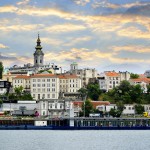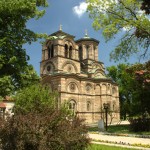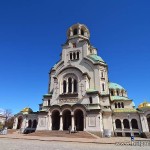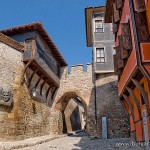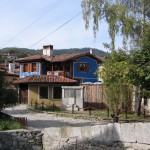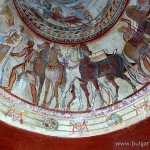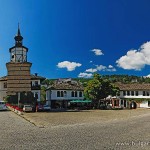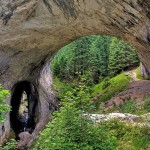Serbia and Bulgaria – the jewels of the Balkans
14 day tour
A unique tour in two of the most beautiful contries in Europe, that includes some amazing highlights.
Itinerary
Day-1. Arrivng.
Arriving in Belgrade. Transfer to the hotel. Overnight in Belgrade.
Day-2. Belgrade.
Breakfast in the hotel. Walking tour of the city of Belgrade.
The city is the capital of Serbia, and has a population of around 1.6 million. It is situated on several hills, at the confluence of the Sava and Danube rivers and its name translates to White city.
Belgrade is one of the oldest cities in Europe and has since ancient times been an important point for traffic, an intersection of the roads of Eastern and Western Europe. During our tour we will reach all of the highlights of the city: the Knez Mihailova street, Kalemegdan fortress, Parliament, the cathedral Saint Sava, the Natonal Theatre, the central square Nikola Pasic and much more.
Dinner upon request. Free time. Overnight in Belgrade.
Day-3. Belgrade – Krusevac. (Driving duration 2.30 hours; 200 km.)
Breakfast in the hotel. Transfer from Belgrade to the town of Krusevac and walking tour.
Krusevac, which today is the seat of the Rasina region, has a long and rich history. Its central location has made it a popular stop in the Balkans since the middle Ages. Krusevac is well known for its Archaeological Park, which comprises King Lazar’s medieval city walls, the Lazarica church, and the National Museum. Tsar Lazar built the town in 1371 as a capital city and military fortress. The building of the beautiful Lazarica church signalled the beginning of the Moravian School of Masonry. The nearby Branič-kula (Defence Tower) is a partially destroyed but a nonetheless impressive 15 m structure.
Dinner upon request. Free time. Overnight in a hotel in Krusevac.
Day-4. Krusevac – Nis. (Driving duration 1.20 hours; 80 km.)
Breakfast in the hotel. Transfer from Krusevac to the city of Niš.
Historians, geographers and writers have always called this city “the Gate between East and West”. City of Niš, one of the oldest cities in this part of Europe, stands at a crossroads of major European routes. With the birth of Flavius Valerius Constantine in Niš (in the second half of the third century), who later became a great Roman Emperor, protector of Christianity, great warrior and statesman, this town got its significant place in the world history. The tour follows the King Milan square, monument of Alexander of Yugoslavia, the Chairska Fountain, the City Hall, built as the seat of the National Bank; the Niš Fortress, located near Nishava, built in 1723, in place of which was located first Roman fort named Naissus.
Dinner upon request. Free time. Overnight in a hotel in Niš.
Day-5. Nis – Sofia. (Driving duration 3 hours; 170 km.)
Breakfast in the hotel. Transfer from Niš to the capital city of Bulgaria – Sofia.
Arriving in Sofia. Free time. Dinner upon request. Overnight in a hotel in the capital city.
Day-6. Sofia.
Breakfast in the hotel. Next is a Full day walking and transport.
It starts with It starts with a visit to Boyana church (UNESCO listed site), the National Historical Museum – holding many collections of artefacts of Balkan history. Next is a visit to the Museum of Communism and proceed to the historical center, across the National Palace of Culture and through the ancient St. George Rotunda, the Administration of the President, the National Archeological Museum, the 16th century Banya Bashi mosque, St. Nedelya – old metropolitan cathedral, the National Theater, the former Royal Palace, the Russian church St. Nikolay, the National Assembly square, where in the middle of the square sits the impressive King Liberator monument, the Holy Synod, St. Sofia church, the Bulgarian National Gallery for Foreign Art, the Alexander Nevski cathedral – the biggest in Bulgaria and according to many – the most spectacular building in Sofia.
Dinner upon request. Free time. Return to the hotel in Sofia. Overnight.
Day-7. Sofia – Rila monastery – Bansko (Driving duration 3.15 hours; 220 km.)
Breakfast in the hotel. Transfer from Sofia to the town of Bansko. On the way – half day tour to the famous Rila monastery. Tour of Bansko.
Rila Monastery is one of the symbols of Bulgaria and also a popular tourist destination. Throughout the centuries Rila Monastery has always been the spiritual, educational and cultural center of Bulgaria. It is listed in UNESCO heritage sites.
Over the years Bansko gradually established itself as one of the leading ski resorts in the country and the region, which attracts many Bulgarian and foreign tourists. There are multiple museums and landmarks in the town. 130 architectural and historical monuments of culture are registered, seven of which are of national significance. The architecture of the typical houses in Bansko from the period of Revival (18th – 19th century) can be seen everywhere in the town.
Dinner upon request. Free time. Overnight in a hotel in Bansko.
Day-8. Bansko – Melnik – Rozhen monastery. (Driving duration 2.15 hours; 210 km.)
Breakfast in the hotel. Transfer from Bansko to the town of Melnik. Half day tour of Melnik and Rozhen monastery. Return back to Bansko.
The first written evidences of the Melnik Fortress refer to the beginning of the 11th century. The first settlers on the territory of contemporary Melnik were the Thracians, and more particularly the Thracian tribe Maedi, of which the legendary rebel Spartacus originated. Afew centuries later the Romans lived on this ground. This is proven by the ancient Roman bridge, which is still preserved in the town of Melnik. The town offers fantastic scenery of the famous Sand Pyramids overlooking the typical houses from the Revival period. Melnik is also known as one of the centers of wine industry. Our tour includes a wine tasting experience.
Rozhen monastery is the biggest monastery in the Pirin Mountains in southwestern Bulgaria. It is one of the few medieval Bulgarian monasteries well preserved until today. The earliest archaeological evidence of medieval life at the place is a grave with a few coins and decorations from the time of Byzantine emperor Michael VIII Palaiologos (1259–1282). Some other items also date to the 13th century while the marble frieze above the central gate of the church dates to the 13th or 14th century.
Dinner upon request. Free time. Return to the hotel in Bansko. Overnight.
Day-9. Bansko – Kovachevitsa – Leshten – Trigrad – Devin. (Driving duration 3.30 hours; 210 km.)
Breakfast in the hotel. Transfer from Bansko to the town of Devin. On the way we will visit the villages of Kovachevitsa and Leshten – architectural reserves and the famous Trigrad gorge.
The village of Kovachevita is an appropriate destination for the admirers of country tourism and relaxation. Besides having the option to walk along the narrow cobblestone streets, and stay in a typical Kovachevitsa house, tourists can taste traditional Bulgarian dishes and enjoy the tranquillity of the Rhodopa mountain.
The village of Leshten attracts tourists with its authentic look and the old houses, preserved since the Bulgarian Revival (18th – 19th century).
The Trigrad Gorge is a 7-kilometer defile north of the village Trigrad, beneath towering marble cliffs cut over millions of years by the Trigrad River. In places the cliffs are only separated by about 100 meters. On the western side of the gorge the cliffs rise roughly 180 meters, while on the east they are 300-350 meters high. The nearby Devil’s Throat Cave is a favorite tourist destination and one of the country’s most impressive developed caves, in part because of its huge waterfall fed by the river – a 42-meter drop.
Arriving in Devin. Dinner upon request. Free time. Overnight in a hotel in Devin.
Day-10. Devin – Shiroka Laka – Wonderful Bridges – Bachkovo monastery – Asenova fortress – Plovdiv. (Driving duration 3.30 hours; 170 km.)
Breakfast in the hotel. Transfer to the city of Plovdiv. On the way we will visit the village of Shiroka Laka – an architectural open-air museum, the natural phenomenon Wonderfull Bridges, Bachkovo monastery and the Asenova fortress.
Shiroka Laka was founded in the 17th century and has now become one of the most popular tourist destinations in Bulgaria. The village has preserved its architecture from the Bulgarian Revival period, its musical culture, beautiful landscapes and rich history.
The Wonderfull Bridges are a rock phenonomenon, situated in a karst valley at 1450 meters above the sea level, at the foot of Golyam Persenk peak (2091 m.). In the past the bridges had been one entire cave, formed under the destructive activity of the river waters. Parts of it were collapsing with time, forming majestic marble bridges. The large bridge consists of three arches, as the largest one is 45 meters high and 40 meters wide.
Bachkovo monastery – the second largest monastery in Bulgaria dates from the middle ages. The monastery was founded in 1083 by the Georgian Gregoriy Bakuriani, who donated the land. For a long time the monastery was Georgian.
Asen’s Fortress is located 3 km. from the city, on the top of a cliff, on the left bank of the Asenitsa river. The first written reference to the fortress dates from the founding of the nearby Bachkovo monastery.
Dinner upon request. Free time. Overnight in a hotel in Plovdiv.
Day-11. Plovdiv – Kazanlak. (Driving duration 1.30 hours; 110 km.)
Breakfast in the hotel. Half day tour of Plovdiv. Transfer to the city of Kazanlak. On the way we will visit the Thracian tomb in Kazanlak and the Valley of the Kings.
Plovidv is considered as one of the oldest cities in Europe. Here you will see remains of the Thracian fortress (5th century BC) and well preserved remains from Roman times to our days. The Old Town is a marvelous site, with picturesque churches, the mosque and many houses with architecture, specific atmosphere and the spirit of Bulgarian Revival period. Your guide will show you the fabulous remains from the Ancient Roman Empire – Roman Stadium, Roman Forum and Amphitheater.
The Kazanlak Tomb, UNESCO world heritage site, based on its architectural outlook, belongs to the dome tombs, typical for the Thracian funeral architecture from the end of the 5th and the beginning of the 3rd century BC. The tomb is one of the best preserved pieces of art from the antiquity in the world.
The Valley of the Kings is full of remains. There you will see different tombs of different kings, that ruled the Thracian teritories during the ages – here is the tomb of the mighty Thracian King Seuthes III.
Dinner upon request. Free time. Overnight in a hotel in Kazanlak.
Day-12. Kazanlak – Bozhentsi – Tryavna – Veliko Tarnovo. (Driving duration 2.30 hours; 130 km.)
Breakfast in the hotel. Transfer from Kazanlak to the city of Veliko Tarnovo. On the way we will visit the ethnographical villages of Bozhentsi and Tryavna. Half day tour of Veliko Tarnovo.
Bozhentsi – a pretty village in the area of Gabrovo, is one of the most beautiful architectural reserves in Bulgaria. There are a lot of museums there and the atmosphere is unforgettable – history and nature.
Tryavna still keeps the spirit of the Revival period even today. The Clock Tower – one of the symbols of Tryavna, stands in the center of the town. It was built in 1814 and is 21 m. high. The tower was declared an architectural – construction monument of culture of national importance.
Veliko Tarnovo is one of the oldest towns in the country, as it’s history dates back to more than five thousand years ago. The upsurge of Veliko Tarnovo is related to the period of the Second Bulgarian Empire (1185 – 1421). After it’s selection for a capital in 1185, the town developed fast, as a cultural and intellectual center of Bulgaria and the Balkan peninsula.
Dinner upon request. Free time. Overnight in a hotel in Veliko Tarnovo.
Day-13. Veliko Tarnovo – Arbanasi – Koprivshtitsa – Sofia. (Driving duration 4.30 hours; 280 km.)
Breakfast in the hotel. Transfer to Sofia. On the way, visit to Arbanasi, the ethnographic complex Etara and the town of Koprivshtitsa.
The village of Arbanasi is located on a high plateau 5 km from the city of Veliko Tarnovo. It is known that the village existed during the time of the Second Bulgarian State (1185 – 1421). At that time the Bolyari (nobles), living in the capital Tarnovo, used it as a summer residence. According to the legend, the King of Tarnovo minted coins here.
The Architectural And Ethnographic Complex Etara is situated on the outskirts of the town of Gabrovo. It is an open air museum. The Complex was declared an architectural and ethnographic monument of national significance. The museum contains a total of 50 sites – houses with handcraft workshops, water installations and other buildings. On the handcrafts street the visitors can observe in real time the work of the craftsmen.
Koprivshtitsa is announced for National Town-Museum. The architecture in Koprivshtitsa reflects the historical development growth of Bulgarian traditional architecture that can still be observed in its various forms at present.
Dinner upon request. Free time. Overnight in a hotel in Sofia.
Day-14.Departure.
Breakfast in the hotel. Departure from Sofia airport.
.
.
Summary:
An amazing tour that is designed to present the real beauty, culture and traditions of the ancient Balkan peninsula.
The tour duration is 14 days and 13 nights.
.
* Price: Upon request
.
Included in the prices:
- One overnight on BB in high quality 4* centrally located hotels in Krusevac, Niš, Devin, Plovdiv, Kazanlak and Veliko Tarnovo
- Two overnights on BB in high quality 4* centrally located hotels in Belgrade and Bansko
- Three overnights on BB in high quality 4* centrally located hotel in Sofia
-
Urban Adventures tour in Sofia with visiting of all main sights in the capital city.
- Tours of Belgrade, Krusevac, Niš, Sofia, Rila monastery, Bansko, Melnik, Rozhen monastery, Kovachevita, Leshten, Trigrad gorge, Shiroka Laka, the Wonderful Bridges, Bachkovo Monastery, Asenova fortress, Plovdiv, Kazanlak tomb, Valley of the Kings, Bozhentsi, Tryavna, Veliko Tarnovo, Arbanasi, Etara ethnographic museum and Koprivshtitsa.
-
English speaking guide
-
All entrances in the sites visited during the tour
-
Arrival and departure transfer
-
Seat in modern vehicle – car, mini-van or mini-bus
.
Supplements – optional:
-
Lunch – 10 EUR per 3 course meal in local restaurant, without beverages
-
Dinner – 15 euro per 3 course meal in the hotel, without beverages
-
Accommodation in 5* – upon request
-
Single supplement – 279 EUR
.
Additional nights in Sofia, per person, per night:
-
Hotels 3* – DBL / TRPL – 20 euro / SNGL – 30 EUR
-
Hotels 4* / 5* – DBL / TRPL – 45 euro / SNGL – 70 EUR
.
Notes:
Zelanos tours guarantees highest quality of the tour.

